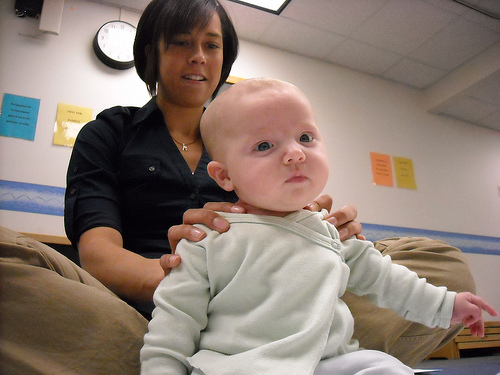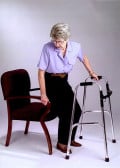Occupational Therapist (OT) vs Physical Therapist (PT) Careers

© 2012 by Aurelio Locsin
Both occupational therapists and physical therapists treat patients for injuries and illnesses without prescribing medications or using invasive surgical procedures. Instead they rely on exercises, movement retraining and special equipment to minimize the effects of physical disabilities. Choosing one career over another depends on the duties, qualifications and rewards of each.
Duties
Both OTs and PTs assess a patient’s conditions by asking him questions, analyzing his medical history and observing him perform physical activities. They can then create a treatment plan, often by consulting other health professionals such as doctors, and discussing options with the patient and his family.
- However, PTs have a wider range of treatment options available, such as exercises, stretching, hands-on therapy and equipment to help pages. They can thus treat a wider array of medical issues including athletic problems.
- OTs are limited to demonstrating exercises and recommending special equipment, such as walkers. They are thus more focused on improving everyday living and working.
Qualifications
Occupational therapists need a minimum master’s degree from an accredited occupational therapy program, which normally takes two years of full-time study to complete beyond the four years of a bachelor’s degree. Physical therapists normally need a Doctor of Physical Therapy credential, which takes three years. However, some programs award a Master of Physical Therapy degree, which can take as little as two years. Training for both types of jobs also include several months of supervised fieldwork or internship, to equip students with practical experience. All states require both jobs to be licensed, which mandates a degree and passing an exam.
OT Compensation
OTs earn lower salaries than PTs at an average $74,970 per year, or $36.05 per hour, as of May 2011, according to the Bureau of Labor Statistics.
- The lowest-paid 10 percent made $49,980 yearly, or $24.03 hourly, while the highest-paid 10 percent earned a mean annual $104,350, or $50.17 per hour.
- Most worked in occupational therapist practices to average $76,190 per year, or $36.63 per hour.
- Next for jobs were general medical and surgical hospitals, which averaged $74,250 per year, or $74,250 per hour.
- Their highest salaries were with home health care services at a mean annual $85,540 per year, or $41.13 per hour.
PT Compensation
Physical therapists boasted average wages that were 6 percent higher than OTs at mean $79,830 per year, or $38.38 per hour.
- The lowest earning made an annual $54,710, or $26.30 hourly, while the highest earning received $110,670 yearly, or $53.21 per hour.
- Their biggest employers were the offices of physical therapists, offering mean wages of $78,120 yearly, or $37.56 hourly.
- Next for opportunities were general medical and surgical hospitals, with averages at $78,710 per year, or $37.84 per hour.
- The employers with the highest pay were management, scientific and technical consultants at an average $91,020 yearly, or $43.76 hourly.
References
- U.S. Bureau of Labor Statistics
The Bureau of Labor Statistics is the principal fact-finding agency for the Federal Government in the broad field of labor economics and statistics.








